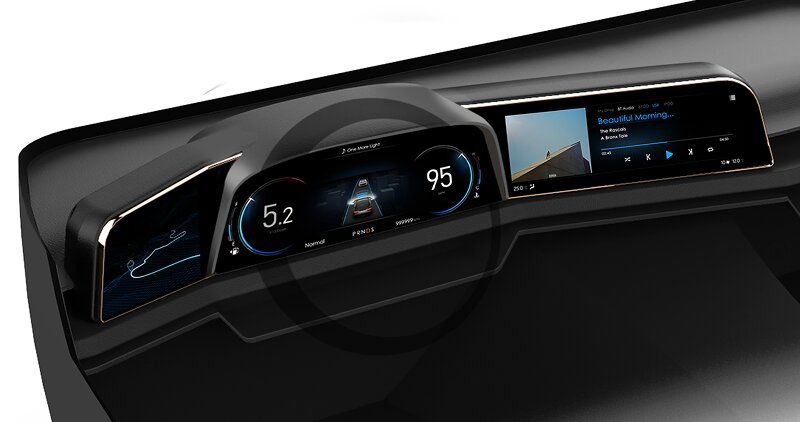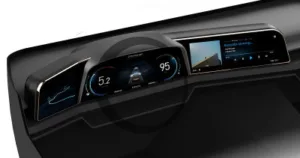Today, I’m going to return to a topic that I have covered a fair amount and really had high hopes for, at one time. That topic is dual cell LCDs and CES 2022 was noteworthy in that I didn’t spot any announcements in the TV area this year.

Here’s a brief introduction for those that don’t know. The problem with LCDs is the leakage of light from the backlight through the cell that means that it’s really hard to get true blacks. There are a number of solutions. One is to use an addressable backlight light source, such as an array of miniLEDs to create a backlight pattern that is optimised to match the image being displayed. That can work pretty well, but is relatively expensive and still leaves some ‘haloing’, unless you use a lot of miniLEDs – which increases the cost. The second way is to add a liquid crystal layer between the backlight and the imaging area that blocks the light. If you have two layers, each with 1,000:1 contrast, the combined contrast can be a million to one.
This idea was around a long time (I believe Sharp showed one at CES in 2007 without saying that’s how it worked), but really gained traction when Panasonic introduced a very high quality dual panel LCD for broadcast monitors. It was significantly better in light output than the OLEDs being used by, for example, Sony in their broadcasting line. In 2017, Eizo blew my mind with a demo of its dual panel broadcast monitor shown side-by-side with an OLED. That was the first time I ever saw an LCD that looked better than an OLED. The reason was that while the OLED was great at black and relatively low to medium intensity, with high luminance saturated colours, it was very limited. The LCD, on the other hand, wasn’t and looked fantastic at high output. The monitor was very power-hungry and expensive, but it looked great.
There was lots of excitement when the same technology started to appear in demos of TV panels and notably at CES in 2019, Hisense had a great demo using a fullHD monochrome panel behind an UltraHD LCD. At Display Week in 2019 there were several demos of dual LCDs that looked very good from CSOT (TCL) and It took a while, but in 2021, the firm finally got a finished TV to market using the technology in 2021. Sadly, it didn’t win shoot-outs when compared to an OLED and by the end of the year, what stock was around was being discounted, as I pointed out in my review of Display Daily articles that I wrote in 2021.
 I took this photo at CES in 2019 when Hisense started promoting dual cell LCDs for TV. The display is split, and shows the bottom half of a footballer. On the left, you can see that the foot is quite well defined (that’s a dual layer) while on the right is the backlight of a typical FALD TV panel of the time (pre-miniLED). Image:Meko
I took this photo at CES in 2019 when Hisense started promoting dual cell LCDs for TV. The display is split, and shows the bottom half of a footballer. On the left, you can see that the foot is quite well defined (that’s a dual layer) while on the right is the backlight of a typical FALD TV panel of the time (pre-miniLED). Image:Meko
So, as far as I know, no panel or TV set maker is, any longer developing any products based on the concept. However, work on the idea does go on. One of the firms that is still developing the concept for other applications is JDI. The firm has suffered in recent years from not having OLED technology that could keep it strong in the smartphone markets where it had developed a good position. However, the firm has a lot of good technology and in May 2021, it announced a new medical monitor that used a dual layer panel. The panel can achieve contrast of more than 500,000:1, without adjusting the output of the backlight. The panel was claimed to have eliminated some of the haloing that can occur in ‘conventional’ dual-cell displays.
One of the other challenges is moiré patterning caused when the pixel pattern on the imaging display is close to that of the backlight display. At IDW*, JDI presented a paper that explained how one way to reduce the effect is to have more pixels in the backlight modulator (at 3:1). (It’s not inconvenient that the three to one ratio would mean that if you had a colour LCD design of the same resolution as the mono LCD, you would have this ratio!). You also need to optimise the shape of the electrodes with a zig-zag pattern to avoid colour issues.
DSCC has reported that you could save a lot of material if, rather than using two complete LCDs (i.e. four polarisers with four glass layers) with adhesive in between, you could use just two polarisers and three substrates. However, to make this work, you need to develop a way to put metal grid polarisers on the the panels and there is no low cost high yield way to do that at the moment.
(Putting glue between two devices without yield or optical issues is one of those engineering challenges that has caused a lot of grief for companies that have wanted to use bonded panels to give better contrast and optical performance. It sounds easy, but even though it has been done in displays for decades [it was used to improve high end CRTs], it is always a challenge to get good yields.)
Parallax errors, caused by the distance between the panels and the different optical surfaces from the thickness of glass substrates, has also been a challenge for dual LCD performance. However, as we have reported, Flexenable, which develops and makes very thin flexible substrates and transistor arrays has pointed out that its technology can radically reduce the overall thickness of a dual cell LCD, reducing this problem. As we reported, Flexenable got a substantial investment from Novares, the automotive supplier and has shown samples of automotive displays that add flexibility to the LCD advantage list.
As I mentioned earlier, Panasonic was the pioneer in bringing dual-cell LCDs to market, albeit in niche and high priced applications. Panasonic decided to stop production of LCDs itself, so perhaps JDI hopes to take over this small but probably lucrative market from the firm. It would be typical of Japan Inc/MITI to try to make sure the business stayed in the country.
Anyway, work does continue, especially in the automotive field, where the long life and established qualification process means that dual layer LCD can offer the deep blacks without the more expensive miniLED and hard to qualify (and using tandem structures, so expensive, OLEDs). We reported on the Visteon MicroZone technology at CES in 2020. and at this year’s show the firm again promoted the technology and confirmed that “In 2021, a North American automaker announced its plans to use microZone for a multi-display system featured in multiple premium and performance vehicle models in 2024″. Visteon is also selling OLEDs, but dual-cell LCD has a place in its future.
 Visteon’s MicroZone Demo at this year’s CES.
Visteon’s MicroZone Demo at this year’s CES.
Tianma also promoted its Arcus dual LCDs for automotive use at Display Week in 2020, although it seems to have gone quiet on that more recently. I have speculated that the firm may be the supplier of displays to Visteon, so perhaps that route to market makes more sense.
So, for now, the dual panel LCD concept seems dead for TVs, but alive in automotive, medical and broadcast applications. If QD OLED turns out to have good lifetime properties, perhaps that will threaten dual panel LCD’s ability to offer high colour volume at different price points. However, Samsung is some way from widening the range of panels that it is likely to offer from its limited capacity over the next couple of years. (BR)
|
9:20 |
Invited Development of Ultra-High Contrast Dual-Cell LCDs with Moiré Reduction Structures *Yosuke Hyodo1, Shinichiro Oka1, Hirofumi Ohira1, Takaya Hirose1, Kazunari Tomizawa1, Tomoyuki Ishihara1, Junji Kobashi1, Shimon Itakura1 1. Japan Display Inc. (Japan) |

